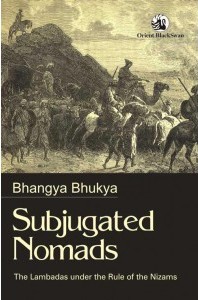B. Prabakaran
 Last month, before Kabali was released, some Dalits in Tamil Nadu posted a merged picture on Facebook, which had Dr. Ambedkar, in his usual pride and impressive posture, on the one side and actor Rajnikanth on the other side. I responded to them, “Do not compare Rajinikanth with Ambedkar”. They replied “Rajini seems to be imitating and emulating Ambedkar in the film Kabali so through such posts we are trying to initiate a discussion on Dalit politics”‘. They felt Rajni resembled Ambedkar in Kabali movie at least in terms of attires and eyeglasses.
Last month, before Kabali was released, some Dalits in Tamil Nadu posted a merged picture on Facebook, which had Dr. Ambedkar, in his usual pride and impressive posture, on the one side and actor Rajnikanth on the other side. I responded to them, “Do not compare Rajinikanth with Ambedkar”. They replied “Rajini seems to be imitating and emulating Ambedkar in the film Kabali so through such posts we are trying to initiate a discussion on Dalit politics”‘. They felt Rajni resembled Ambedkar in Kabali movie at least in terms of attires and eyeglasses.
Though, even now, I completely differ with what they said and did with the photograph as it was merely comparing two personalities, there are a few elements in the film, if not the entire film, that profoundly represents the oppressed against the oppressors in a way, as the actor-hero, Rajni, himself proclaimed recently, which is indeed “revolutionary”.
From the beginning, feelings being expressed towards the film and its making in the ‘mainstream’ media have been quite mixed. Some have said the film is a “failure”, “waste” and “boring”. Some fans lamented, “It is not the usual Rajini film”. Some sections of Dalits have celebrated the film gloriously, not for the actor but for the Dalit film director Ranjith.
However, one thing is sure; no film has been debated in the public domain, in recent times, as Kabali is being done, especially among the Dalits. Before the release, one section of Dalits propagated that the film has Paraya politics. Then immediately, as a counter, Pallars declared, “No, this is Pallars’ story”. This was followed by the intermediate caste claiming that “it is the story of migrated Tamil Udaiyar caste in Malaysia”. At last they seem to be arriving at a consensus around the film being based on politics and the image of Ambedkar, even if the story line is not based on him.
After the release, the vengeance created by certain social groups towards the film is proliferating in abundance in the name of film reviews. The mass media, dominated by the privileged castes and class, have criticized the film from their ‘sophisticated’ social positions. One of the leading Tamil dailies, Dinamani, reprimanded the film, calling it a ‘bad dream’ as it has not fulfilled ‘their’ expectations. They have suggested that the Director Ranjith has no ability to handle the ‘superstar’ as he is a ‘low class thinker cum low budget film maker’. Dinamani, literally, tried to scrutinize the image, content, dialogues and director’s role from upper caste/class perspective. Rajini needs ‘superstar image not an ordinary serious image’ wrote another paper.
On the one hand, Kabali is an ordinary gangster movie with all the ingredients of heroism, gun-fights, violence and the white skinned heroine formula. On the other hand, it has broken many stereotypical portrayal of a typical mainstream heroine. Some of the finest dialogues take place between Rajini and his wife unlike his other films.
Then why have ‘they’ shown such aggression against the film? In order to answer this question, one has to raise and answer another basic question -who is Kabali?
Kabali is the son of an indentured Tamil slave labour, probably a Dalit from Madras presidency, but a radicalized person. He has an ability to articulate in English and reads Dalit literature, though being a first generation student. He has internalized revolutionary ideas from the brutal lifelong experiences of the leaders across the globe- particularly Che, Malcom X and Mandela. Kabali, the man, follows Ambedkar and Buddhism as an emancipatory ideology. In his rehabilitative school, he lets Muslim women hold chief positions at his education center. He raises voices against the slave laborers, who want freedom at every level, including freedom for caged birds and animals. As a result, Kabali seems to be raising questions, apparently, public caste consciousness, through his powerful dialogues, against the oppressors.
This assertion of the film’s subject seems to have repelled ‘them’ so much so that ‘they’ have taken a stand against the film – its political colour as well the director’s caste and audacity. The assertive dialogues like, “I study well”, “I wear decent clothes, sunglasses”, “If I grow and develop – why are you getting angry” does not seem to go down well with the oppressors’ consciousness. However, such assertive conversations would appeal to anyone who face/has faced oppression, humiliation and suppression based on or beyond his/her caste, class, gender, colour, region, and language. This is the strength of the movie Kabali as it has multiple sub-texts layered inside; therefore interpretations of the film would vary from one group to another.
Once, Theodore Baskaran, the film critic, wrote that the cinema theaters were one of the ‘earliest democratic spaces, where all comers could be together without the distinction of caste, class, race or religion for a few hours’. But the content and the characterization of the south Indian films, mostly, promotes predominantly caste-culture of Brahmins and intermediate castes. While sexualization of gender and celebrations of caste pride has been overdone in the last few decades, most of the films have also portrayed Dalits and marginalised as ‘black skinned’ criminals, rapists, murderers, kidnappers, and gangsters. Kabali changed that entire narrative and description, even the associations of his previous films – (North) Madras and the villainous name Kabali.
Whether it is intentional or a spontaneous expression of his imbibed ideology, the film director brought very powerful, appropriate symbols to the front – like books, pictures, names, colours and attires, by which he has initiated a dialogue between social groups-classes and castes- as he has himself articulated in the interviews. ‘Any criticism of the status quo must be articulated through language’, as language is intrinsically critical, as explicated by sociologist Habermas in his conceptualization of communicative action. Habermas believed that language has an ability to lead into action. So here language seeks to play that critical role against the dominant and oppression- be it of caste, class, colour, region, language or gender.
Through symbols, dialogues and imagery that Ambedkar’s name reinvigorates, the film undeniably gives us a distinct narration which goes beyond merely entertaining. But will this raise our consciousness, living in a highly stratified caste society? Or lead to any perceptional change? Must we wait for that change till the medium gets occupied by such emancipatory ideas or gets ‘occupied’ by the marginalized?
Despite the fact that film has various limitations, it effectively captures the position of the oppressed through a main stream medium whereby we hope the director would create yet another movie with deeper narration of the marginalized subject.
~~~
B. Prabakaran is the author of three books on Ambedkar and a regular contributor to Round Table India. He can be contacted at prabakar.bas@gmail.com










